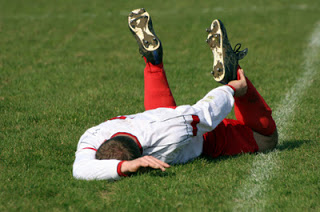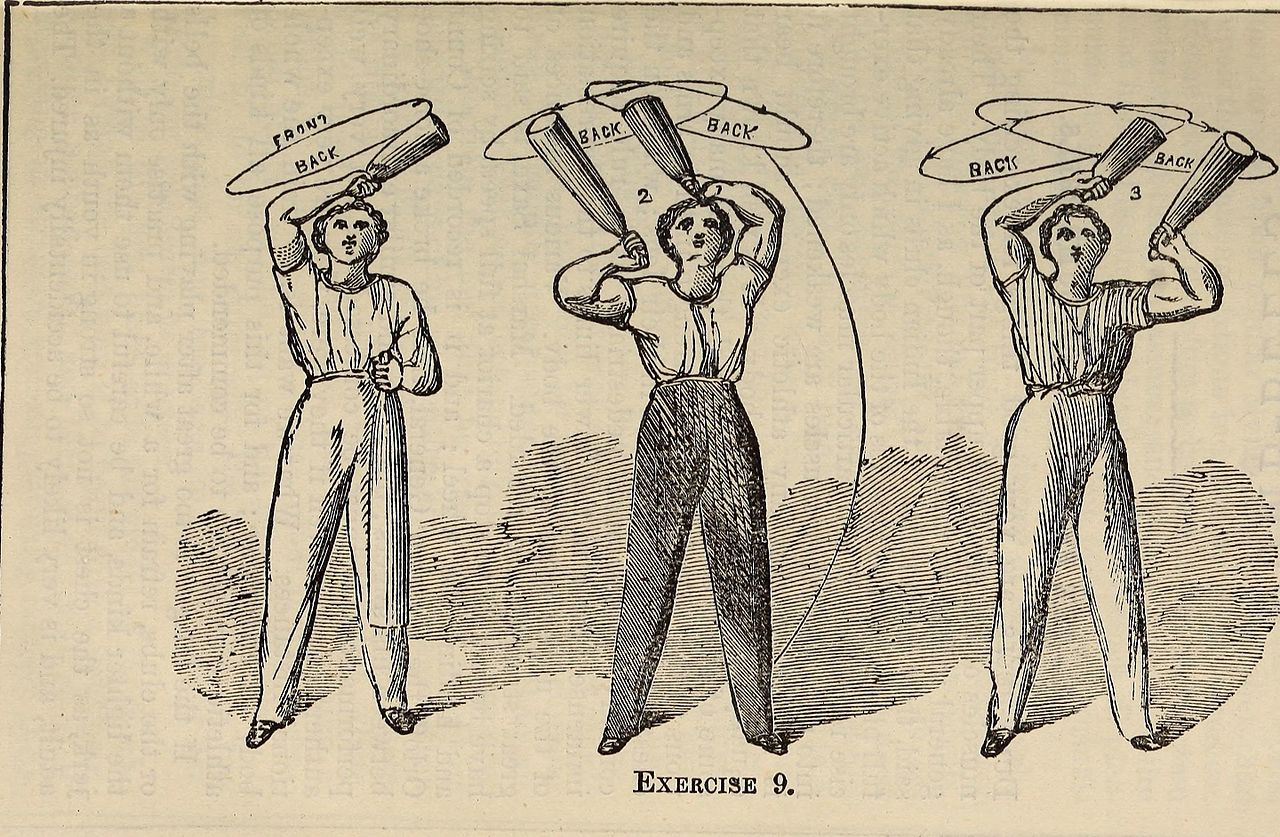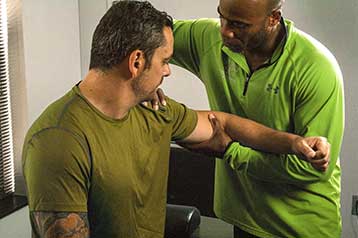Train, train, train! Speed. Power. Quickness… Ouch!!
We are trained professionals in the science of sports performance and injury prevention. Sometimes things go wrong, and injuries happen. It is no doubt that each sport has its own inherent quality to provoke an injury. From the muscle tear to the dreaded ACL tear, the body does have its limitations. My mentor put it bluntly when I did my first clinical internship many years ago while performing my first shoulder exam of a professional baseball player. He said: “Skip. The body is NOT made for sport!” I thought, ‘how true.‘
Injuries happen at all levels of competition no matter how ‘talented’ you are. The stress and frequency of training should increase as you become stronger. The amplitude, loads, intensity, etc. should all become more demanding BUT, this must be calibrated properly to reduce the risk of injury. The body’s tissues (i.e., ligaments, tendons, cartilage, and muscle) have certain tensile capacities that breach or tear when training loads are chronically excessive.
What is the disease of excellence?
The disease of excellence is injuries that occur from intense demands on a complex movement system: the human body. When you watch sports that require quick decision making, speed, acceleration, deceleration, jumping, colliding, agility there are complex neurological relay systems that happen so fast it’s incomprehensible. Muscles are firing at incredible speeds. Volitional responses occur within milliseconds. But when it goes wrong you may “wonder how does a high-level professional athlete let alone a little league, high school or college athlete get hurt?” Several factors that result in injury: 1. Poor or outdated training methodology, 2. Ignoring signs and symptoms, 3. Date injury management techniques, and 4. Lack of or no training periodization.


Poor or outdated training methodology
Whether you know it or not, training and conditioning is a science. Often it appears that all you are doing is just working hard with no real purpose besides sweating! However, our training programs are designed to provide the optimal intensity that will provoke a training stimulus to make you stronger and enhance calorie combustion. Unfortunately, there are amateurs who think that training has not evolved at all and are still doing the same training methods done when they were in high school! Little do they know that those dated techniques predispose them to injuries, decrease in power output and the dreaded training plateau!
Ignoring signs and symptoms
I’m guilty of it too. You feel a little ‘something’ in the shoulder, ankle or knee but you brush it off as a training ‘pain.’ Then it gets worse. So what do you do? Stop the offending exercise until the pain goes away then with a logic that is truly dizzying you go BACK to the thing that hurt you in the first place!! This same guy/gal feels compelled by the bodybuilding or boot camp mentality that the pain is normal. Huh?! Look, it’s not normal.
Muscle soreness is normal – NOT pain that lasts more than two weeks! Such training programs need a serious overhaul, which is what we specialize in. When I evaluate an injury caused by training, I always have the subject demonstrate ‘their’ technique. 99% of the time the technique is either flawed or outdated. Our training programs are challenging, innovative and progressive but never flawed or outdated. Like we say with a grain of truth ‘don’t try this at home’!!


Dated injury management techniques
Epsom salts. Magnets. Oxygenated waters. The list is endless. So are placebos! IF YOU BELIEVE IT WORKS, IT WILL WORK!! Nevertheless, it does not address the CAUSE! We encourage our clients to inform us when they suffer what I like to call ‘snags'(minor soft tissue injury) caused by a workout that was too aggressive. It’s simple for us ‘re-calibrate’ the training session to promote recovery via specific rehab techniques that we design. Trust our vast experience in the management and treatment of orthopedic sport-related injuries. The key is managing the intensity and duration of the workload. But more importantly getting an accurate assessment of the problem before proceeding to the point of no return!
No training periodization
Periodization simply means altering training frequency, duration, and intensity throughout the year. Most don’t do this, and by combining all of the above scenarios, this is a ‘perfect storm’ for an injury to occur. It is easy to periodize your training simply by adjusting variables that are in your control such as training days, active recovery and regulating training durations.
We recommend that if you are involved in ANY high volume/amplitude type training, it is a good idea to mix up the frequency of your training week. So if you train four days a week and take classes two days a week that’s 6 training days. We suggest you do what is called a two day-split: Train 2 days in a row-REST third day-train another two days-REST for two days. If this sounds sacrilegious to YOU, then this blog is for you!

Fitness Solutions
Hopefully, this gives you insight on how to prevent injuries and still maintain an intense training environment. Injuries will happen when you push your body to the limit. The key is knowing how to manage those injuries, prevent them in the first place and more importantly knowing when you need to upgrade your current training regiment. We’ve got fitness solutions for those recovering from injuries or surgery, athletes in their prime, or even those past it
“Muscles soreness is a side effect. Not an objective.”
-Skip Bunton
